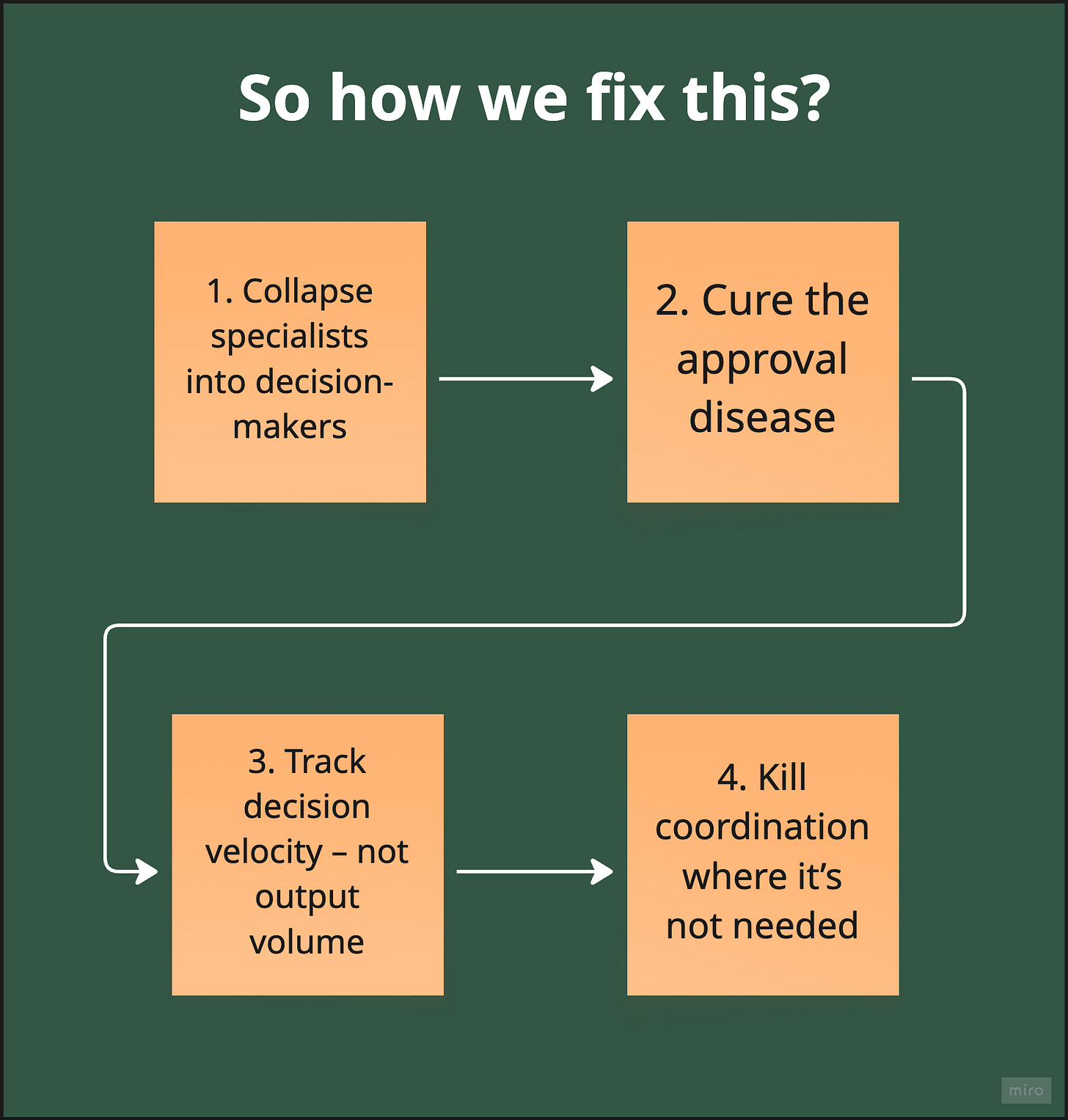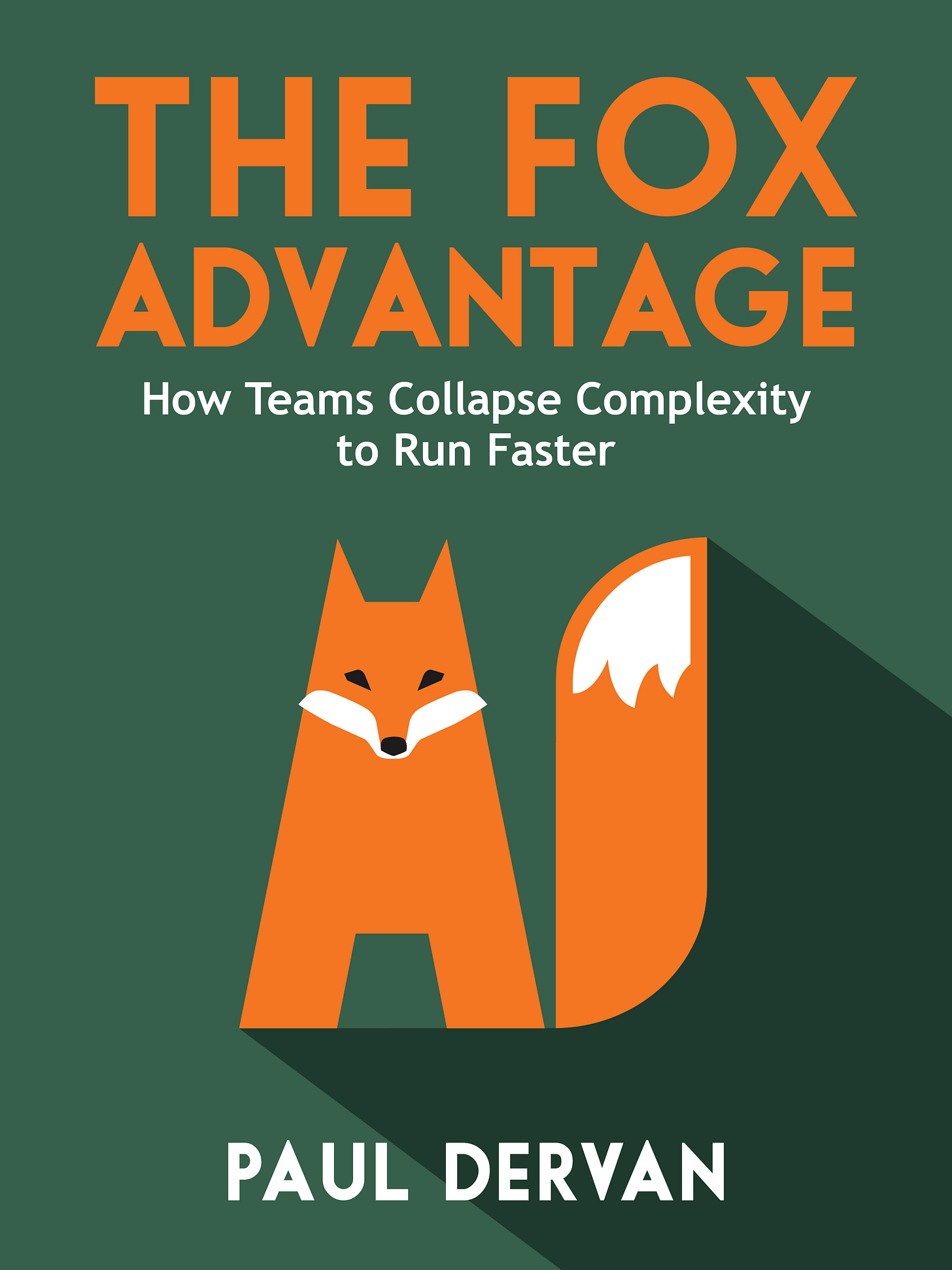Chapter 1: The Marketing Department Autopsy Report
From "The Fox Advantage" by Paul Dervan | Part 1: What Just Collapsed
Marketing didn't fade. It flatlined.
But the meetings went on. The decks got longer. And nobody wanted to call time of death.
The crime scene
We built marketing like a civil service.
Layered. Titled. Ritualised.
The strategist thinks. The creative director adds vision. The copywriter adds words. The designer adds polish. The social team schedules it. The compliance team deletes half of it.
Three weeks later, something stumbles out the door. It's late. It's beige. It cost a fortune.
Meanwhile, a 23-year-old with Claude and Midjourney shipped three campaigns before we agreed if the headline should say "empowering" or "enabling”. Not that it matters. Nobody read it either way.
We didn't just build a slow system. We built one optimised for a world that no longer exists. Like a loyalty card for a DVD rental shop.
The collapse is already here
Let's not call this a disruption.
Let's call it what it is: a collapse.
Small teams with tools are now moving faster than big teams with process. While some are still rewriting the brief, others have already tested five ideas and moved on. The specialist stack wasn't streamlined. It was sidelined.
The diagnosis: Execution lost its edge
We used to pay for execution. Design. Craft. Copy. Now most of that is cheaper, faster – and often, let's be honest, better – when done by machine.
If your value is tied to what you produce, you've already been replaced. You just haven't been told yet.
We were trained to be hedgehogs. Pick a lane. Stay there. Climb the ladder.
But the foxes – the curious, cross-trained, judgment-led ones – are moving faster, breaking rules, and skipping the whole approval chain.
Let's be clear: AI makes average execution free.
So the value has moved.
The strategic stance: Judgment is the new edge
You're not paid for your polish anymore. You're paid for your taste.
Not: Can you write the ad?
But: Can you tell the difference between an ad that works and one that just fills space?
Your new job is:
Spot the tension before the brief.
Choose the 10x idea over the 10th revision.
Move fast – without losing the plot.
Execution is now a given. Judgment is the differentiator.
So how we fix this?
1. Collapse specialists into decision-makers
That six-person social pod? It's now two generalists with taste, AI tools, and the permission to act.
The old model: "I do my bit, then pass it along."
The new model: "I can make the call, do the work, and hit publish before lunch."
This isn't about unicorns. It's about removing the need for unicorns.
2. Cure the approval disease
Our seven-layer approval chain isn't quality control. It's momentum loss. Sharp teams will set boundaries, act fast, and review while it still maters. Not "Is this perfect?" but "Did it work?"
As my dad, a doctor, used to say: "Don't wait for the autopsy to fix something you could've caught in triage."
3. Track decision velocity – not output volume
Nobody cares how many banners you shipped.
Start tracking how fast you move from insight to action.
That's the real metric now. That's where you win.
4. Kill coordination where it's not needed
Every handoff slows you down. Every sync meeting is a tax. Every job title that starts with "liaison" should come with a warning label.
Smart teams won’t make coordination more efficient. They’ll make it unnecessary. This book isn't a plea to save marketing. It's a manual to rebuild it.
In the chapters ahead, you'll learn:
How to collapse the old stack without binning what still works.
How to use AI without becoming its intern.
How to shift your value from output to insight.
And how to make yourself – and your team – faster, sharper, and too valuable to bin.
Marketing isn't dead.
It's mutating.
And the foxes – the ones who adapt faster than others can plan – will come out on top.
See you next week.







Too the point. No nonsense. Love it.